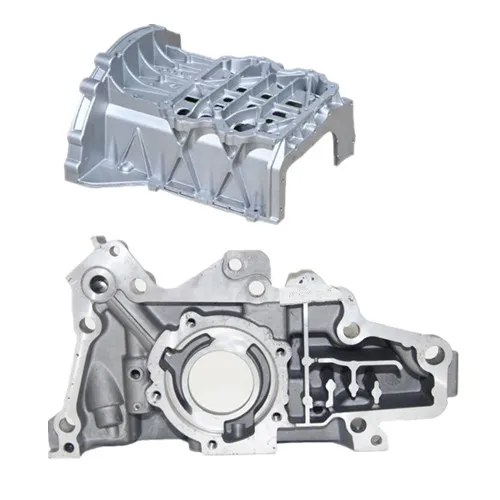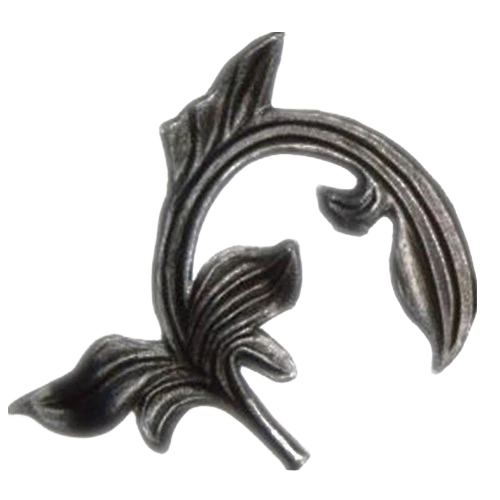Mobile:+86-311-808-126-83
Email:info@ydcastings.com
Italian
High Precision Die Casting Solutions Aluminium Die Casting vs Sand Casting Custom Manufacturing Experts
- Introduction: Understanding Die Casting and Its Prevalence in Modern Manufacturing
- Sand Casting vs Die Casting: Comparative Overview Supported by Data
- Technical Advantages of Die Casting Aluminium
- Key Manufacturers and Industry Leader Comparison
- Customized Die Casting Solutions: Strategies for Enhanced Performance
- Application Case Studies: Die Casting Driving Real-World Impact
- Conclusion: Die Casting’s Evolution and Market Outlook

(die casting)
Introduction: Understanding Die Casting and Its Prevalence in Modern Manufacturing
Die casting has established itself as a pivotal process in the global manufacturing landscape, favorably positioned for mass production of complex, high-precision metal components. The essence of die casting
lies in injecting molten metal, most commonly aluminium or zinc alloys, under high pressure into precisely machined mold cavities. Today, die casting facilitates up to 19% faster cycle times compared to traditional casting techniques, fueling its adoption in the automotive, aerospace, electronics, and consumer goods industries. Its capacity to deliver intricate geometries, tight tolerances, and exceptional repeatability underpins its dominance in both high-volume and specialized manufacturing sectors.
Global market data underscores this momentum. The die casting market, valued at $64.3 billion USD in 2022, is projected to expand at a CAGR of 6.1% from 2023 to 2030. Leading regions, including Asia-Pacific, account for nearly 47% of global consumption, mirroring the surge in automotive and electronics manufacturing hubs. With sustainability objectives intensifying, die casting aluminium components are proving instrumental: the sector accounts for over 12 million tons of lightweight aluminum parts annually, reducing vehicle weight by 15-30% and directly impacting fuel efficiency and emissions.
Sand Casting vs Die Casting: Comparative Overview Supported by Data
Two methodologies have long been contrasted for their roles within the foundry sector: sand casting and die casting. Below is a comparative analysis articulating efficiency, cost, surface finish, and typical application domains.
| Parameter | Sand Casting | Die Casting |
|---|---|---|
| Cycle Time | 5–30 minutes per unit | 40–120 seconds per unit |
| Tooling Cost | Low (starting from $1,000) | High (starting from $20,000) |
| Surface Finish (Ra µm) | 6–25 µm | 0.8–3.2 µm |
| Dimensional Accuracy | Moderate (ISO 8062 CT9–10) | High (ISO 8062 CT5–6) |
| Material Utilization | Up to 85% | Up to 98% |
| Annual Output Viability | Small to medium volumes | Medium to high volumes |
| Suitable Alloys | Almost all metals including iron | Primarily non-ferrous metals |
| Common Applications | Prototypes, large parts, industrial machinery | Automotive, electronics, consumer products |
Data from industry surveys reveal that 80% of automobile structural components are now produced using die casting, attributed to its rapid cycle times and superior finish. In contrast, sand casting maintains its niche in low-volume, large, and bespoke part fabrication due to its low upfront tooling investment.
Technical Advantages of Die Casting Aluminium
The utilization of aluminium in die casting processes has redefined standards for performance and efficiency. Aluminium alloys offer a compelling strength-to-weight ratio, intrinsic corrosion resistance, and excellent thermal and electrical conductivity. Furthermore, aluminium’s high fluidity at casting temperatures allows seamless filling of intricate die cavities, enabling the creation of thin-walled components with wall thicknesses as low as 1mm—a crucial asset for electronic housings and automotive parts requiring both lightweight construction and robustness.
Studies demonstrate that switching from steel to die-cast aluminium can result in up to 40% component weight reduction, while simultaneously enhancing energy absorption—critical in safety-focused applications. Recyclability is another significant dimension; over 90% of aluminium die casting waste can be efficiently recycled, promoting closed-loop manufacturing. Thermal performance is superior as well, with heat dissipation rates 3x higher than die cast zinc, granting significant design flexibility within thermal management modules. Ultimately, aluminium die casting consolidates part counts, reduces assembly needs, and elevates reliability in end-use sectors.
Key Manufacturers and Industry Leader Comparison
The global die casting industry is shaped by technology-driven manufacturers, each offering unique strengths in capacity, innovation, and regional coverage. Below is a comparative snapshot of leading companies driving the advancement of die casting:
| Manufacturer | Annual Output (Tons) | Primary Metal | Patented Technologies | Global Market Share (2023) |
|---|---|---|---|---|
| Ryobi Die Casting | 310,000 | Aluminium | Vacuum-assist HPDC, Automated Defect Analysis | 7.2% |
| Nemak | 720,000 | Aluminium and Magnesium | Structural Thin-Wall Casting | 8.9% |
| Dynacast | 190,000 | Zinc, Aluminium, Magnesium | Multi-slide Die Casting, Micro Precision | 5.1% |
| Lingotes Especiales | 100,000 | Ferrous & Non-ferrous | Hybrid Die Design | 3.2% |
| Endurance Technologies | 122,000 | Aluminium | Integrated Foundry Systems | 4.7% |
These companies are pushing forward with automation, real-time quality monitoring, and low-carbon process innovations, maintaining competitiveness in both global and regional markets. The focus on aluminium die casting technology is set to intensify, given its alignment with trends toward lighter, energy-efficient components.
Customized Die Casting Solutions: Strategies for Enhanced Performance
Customization has become a cornerstone strategy in advanced die casting, aligning process and product with precise end-user requirements. The optimization starts with digital simulation of die filling, thermal profiles, and solidification, leveraging computational fluid dynamics (CFD) and finite element analysis (FEA). These techniques reduce prototype iterations by up to 65%, shorten development timelines, and minimize defects like porosity or incomplete filling.
Tailoring alloy selection further amplifies mechanical properties. Custom heat treatment, micro-alloying, and targeted secondary operations (such as CNC precision machining, anodization, or shot blasting) are frequently deployed to achieve enhanced tensile strengths exceeding 350 MPa or specific surface properties. Rapid tooling technologies, including 3D-printed die inserts, now make low-to-medium volume customization viable at 25% lower lead times.
By integrating quality assurance systems—such as in-line X-ray and automated optical inspection—manufacturers maintain exceptional process control, yielding first-pass yield rates regularly above 98%. This commitment to customization and quality sets state-of-the-art die casting providers apart.
Application Case Studies: Die Casting Driving Real-World Impact
The transformative power of die casting is evident across multiple industries through robust application case studies. In the automotive sector, Tesla’s introduction of giga-casting using massive aluminium die-castings for front and rear underbodies has reduced component counts from 70+ parts to just two, streamlining production, cutting assembly time by 15%, and improving structural rigidity. This innovation is credited with reducing overall chassis weight by more than 10%, directly influencing electric vehicle range.
In the medical device domain, die casting has enabled the mass production of hand-held diagnostic housings with ultra-thin wall sections and challenging geometries, maintaining tolerances of ±0.05mm and repeatability essential for high-reliability use. For consumer electronics, die-cast aluminium frames deliver enhanced durability and heat dissipation within slim form factors. Notably, one South Korean electronics giant reported a defect rate reduction from 2.8% to 0.2% after transitioning to precision die casting for smartphone housings.
Infrastructure and lighting manufacturers employ die casting to deliver large, intricately ventilated LED module cases, driving down weight while ensuring thermal management. Reliable, scalable production achieved through die casting continues to open new frontiers in product performance, cost control, and market responsiveness.
Conclusion: Die Casting’s Evolution and Market Outlook
Die casting has proven itself as a transformative process, shaping innovation through precision, speed, and adaptability. The ongoing evolution of die casting aluminium and advances in automation, digital process control, and alloy development are set to expand its role further. Market analyses forecast a sustained increase in demand, with next-generation transport, electrification, and sustainable manufacturing acting as the primary levers of growth.
As manufacturers continue to push boundaries—not only in scaling production but also in delivering customized, performance-driven solutions—die casting remains fundamental to the future of industrial manufacturing. Its rising share in global supply chains speaks to a process that marries technical excellence with scalable, cost-effective production, poised to meet the challenges and opportunities of tomorrow’s engineered products.

(die casting)
FAQS on die casting
Q: What is die casting?
A: Die casting is a metal casting process that involves forcing molten metal under high pressure into a mold cavity. The molds, called dies, are usually made of hardened tool steel. This process is widely used for producing precisely shaped metal parts.Q: How does sand casting differ from die casting?
A: Sand casting uses a sand-based mold, while die casting uses a metal die. Die casting produces parts with higher precision and smoother finishes. Sand casting is generally more economical for low-volume production.Q: What are the main advantages of die casting aluminium?
A: Die casting aluminium allows for the mass production of lightweight, durable, and complex components with tight tolerances. It also provides excellent surface finishes. Aluminium’s corrosion resistance is a key benefit in many applications.Q: Can you use die casting for small and complex parts?
A: Yes, die casting is ideal for producing small, complex, and intricate metal parts. The high-pressure injection ensures accurate replication of fine details. It's commonly used for products like electronic housings and automotive components.Q: Which industries primarily use die casting processes?
A: Die casting is widely used in the automotive, aerospace, electronics, and consumer goods industries. These sectors require high-volume, precision metal parts. Die casting helps meet the demand for strength, accuracy, and efficiency.-
High-Performance Automobile Water Pump & Electric SolutionsNewsAug.30,2025
-
Expert Stainless Steel Casting | Precision & Durable Metal PartsNewsAug.29,2025
-
Precision Metal Castings: Aluminum, Stainless Steel & Die CastingNewsAug.28,2025
-
Superior Aluminum Castings in Automotive Engine PartsNewsAug.22,2025
-
Common Materials Used in Fan Housing ManufacturingNewsAug.22,2025
-
Symptoms of a Stuck Automobile Water Pump ImpellerNewsAug.22,2025











